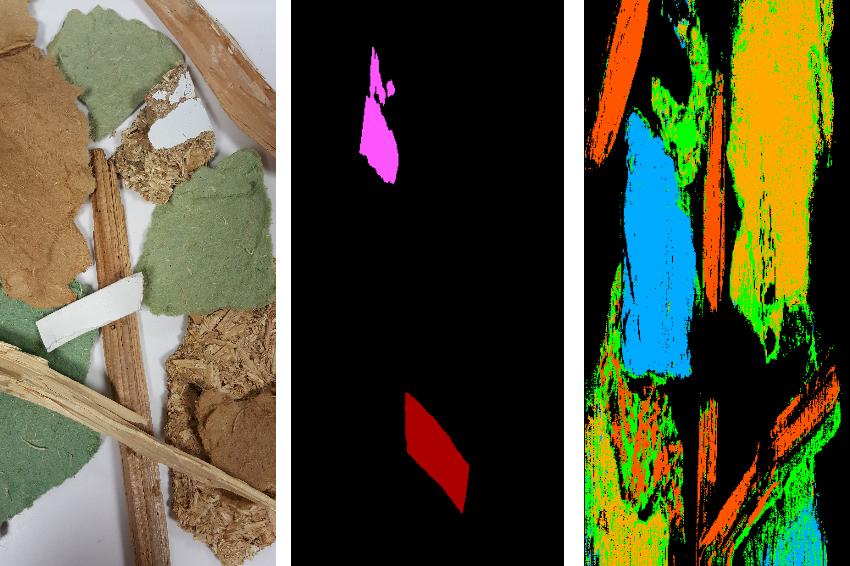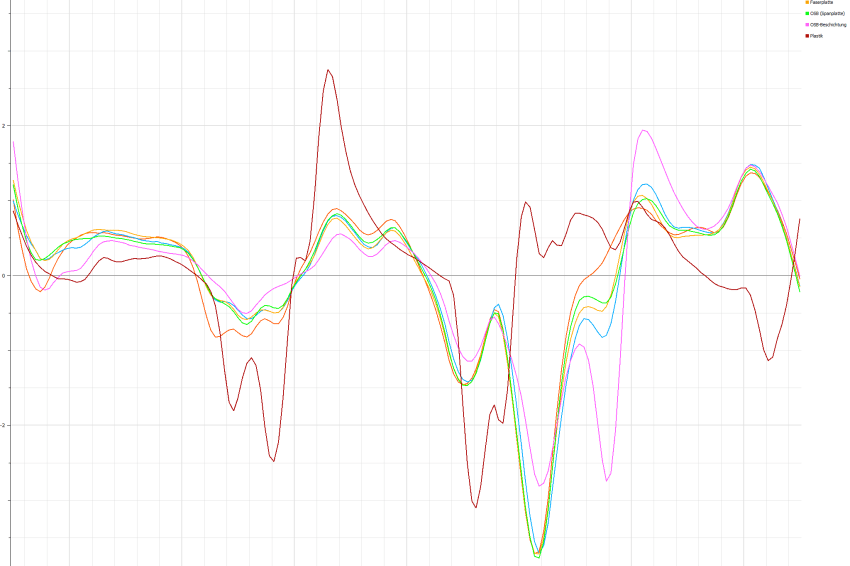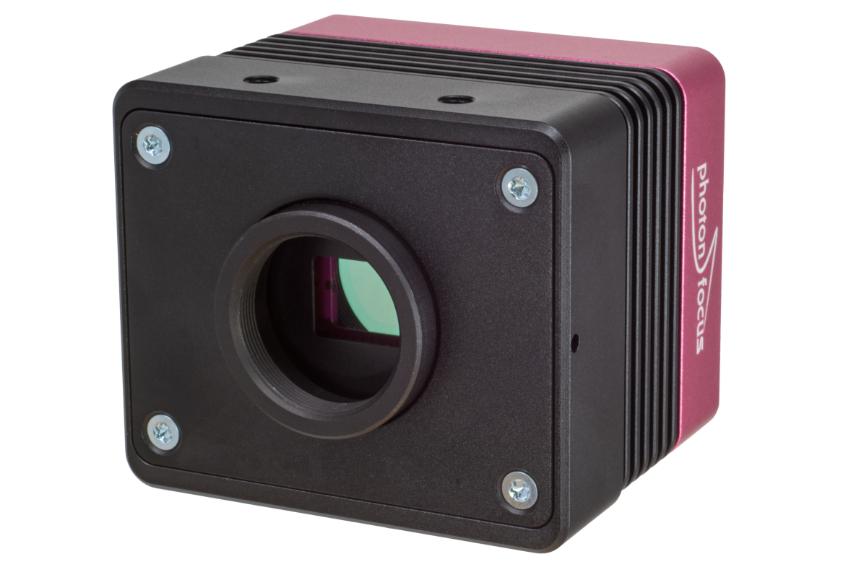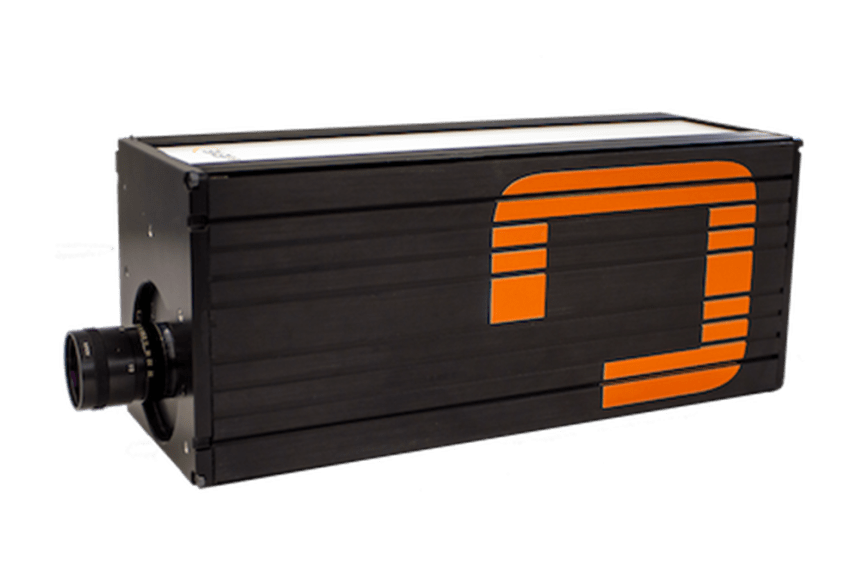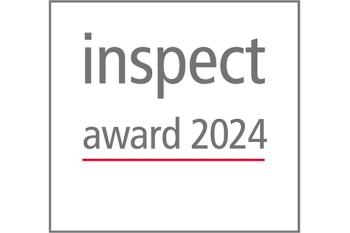Hyperspectral Imaging in the Recycling Industry
Automated sorting of construction timber residues for recycling
Resource-conserving handling of wood is also becoming increasingly important. Not only for cost reasons, but also for climate protection, recycling is important: on the one hand, because wood stores a lot of CO2, which is released back into the atmosphere at the end of the wood product’s life, and on the other hand, because recycling conserves the resource. Therefore, discarded wood is collected, sorted according to waste classes and sent for appropriate processing. The goal here is to dispose of as little wood as possible. The basis for this is the exact recognition and differentiation of all components: It must be reliably recognised whether the material present is wood or a foreign material. The next step is sorting by wood materials to enable subsequent recycling.
The solution: Hyperspectral imaging
For fine grading of wood-based materials, using a colour camera would not be successful because the identity of the material is not normally reflected in the colour. This is where hyperspectral imaging comes into play. Different materials absorb electromagnetic radiation differently. A hyperspectral camera makes this absorption behaviour and therefore material differences visible. Radiation in the short-wave infrared range (Swir) is best suited for differentiating between wood materials.
Hyperspectral sensors become suitable for everyday use
Sensor technology has developed considerably in recent years. In terms of sensitivity for certain ranges of the electromagnetic spectrum, sensors have been added that, in addition to VIS, now also provide reliable data for ultraviolet wavelengths from 150 nm or in the swir up to 1,700 nm. In addition, there are now sensors that cover several of these ranges in parallel, which means they are suitable for use in the applications described above.
Wood recycling: the process
In the recycling process of wood, the materials to be sorted are crushed, run over a conveyor belt and are inspected and sorted in the process. Roughly speaking, wood materials from the construction sector can be divided into solid wood, chipboard and fibreboard. These materials are often additionally coated with plastics or have plastic edges. Chipboard and fibreboard also contain different amounts and types of binders and colourants. Often, a distinction based on colour, i.e. in the visual spectrum, is not possible due to the similarity.
However, this does not apply to the swir spectral analysis: if one compares the spectral response of the materials, clear differences can be seen in the swir range. This allows a reliable classification and thus also a simple sorting out of the individual pieces.
Swir: Spectral data contain chemical information
Hyperspectral imaging is based on the chemical analysis tool spectroscopy. This is expanded into an efficient imaging method that can also be used for industrial processes. It is used to capture a large area at high speed, with each individual image pixel containing a complete spectrum. If the short-wave infrared range (Swir) is measured instead of the visible range of the spectrum, the spectral data contain chemical information that can be used, for example, to draw conclusions about the material, the amount of an ingredient or an existing coating or contamination.
Author
Miriam Schreiber, Business Unit Manager Marketing Communications & Services
The Redeye 1.7 NIR hyperspectral camera from Inno-Spec
The Redeye NIR hyperspectral camera from Inno-Spec has a spectral range of 950 to 1,700 nm. The camera's optics break down each local point on the recorded line into its spectral components. The Swir-sensitive InGaAs area sensor thereby maps the local information in one of its two dimensions and the spectral information in the other dimension. Successive sensor images in time form the second local dimension and are combined to form the so-called hypercube.
Inno-Spec, as a specialist for hyperspectral optics, designs and manufactures them with a special focus on precision, low aberrations and high light transmission for high measurement rates and good spectral quality, which in turn improve the automated analysis results. An industrial camera from Photonfocus is used as the unit of sensor and electronics, which is installed together with the optics in the IP65/67-classified housing, which is thus also suitable for harsh environmental conditions.
All of Inno-Spec's HSI cameras are pushbroom systems, which means that the system works like a line scan camera, capturing moving objects line by line. This method enables high measurement and sample traversing speeds.
Swir cameras from Photonfocus
The spectral camera series includes cameras with swir and UV sensors, as well as cameras for hyperspectral imaging. The MV3-D320I-T01-G2 swir camera is based on the Chunghwa FPA-320x256-K InGaAs image sensor with a CMOS readout stage. The sensor has a saturation charge of 3.5 Me- and is designed for high dynamic range and high signal-to-noise ratio. The integrated multi-ROI function with up to 128 readout windows provides increased evaluation speed and clock rate.
The camera is suitable for standard applications and demanding machine vision applications in the spectral range from 900 to 1,700 nm. With the global shutter, high-speed applications with exposure times in the µs range are also possible. The GigE interface ensures fast and reliable data transmission.

